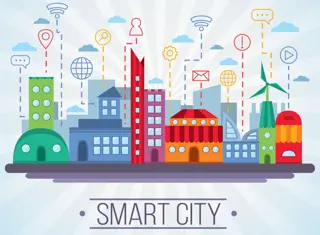Bhubaneswar Smart City Project Enters Final Phase: Transforming Through Advanced Urban Planning and Sustainable Infrastructure by 2026

Introduction
Bhubaneswar Smart City Limited (BSCL) has officially entered the final phase of its Smart City Mission. The goal is to turn Odisha’s capital into a globally recognized model of sustainable urban development by 2026. With extended deadlines and renewed focus on completing pending projects, the initiative prioritizes advanced infrastructure, community-centric housing solutions, and cutting-edge smart governance systems.
Key Initiatives Driving the Final Phase
The BSCL has prioritized three core pillars for the final push:
Core Infrastructure Upgrades:
- Smart Traffic Systems: Expanding integrated command control centers and intelligent traffic signaling to reduce congestion.
- Lake Neutral Project: Revitalizing urban water bodies like Drainage Channel 10, enhancing green spaces and flood resilience.
- Multi-Level Parking: Optimizing urban mobility through facilities completed in Saheed Nagar and Raj Mahal areas.
Housing & Social Equity:
- Affordable Housing: Accelerating construction of pending slum rehabilitation projects, including 3,660 houses under the Rajiv Awas Yojana (RAY) scheme.
- Transition Housing: Allocated Rs 2,082 crore for completing six critical projects worth Rs 495 crore, including incomplete transit houses.
- In-Situ Redevelopment: Phased approach to relocate slum dwellers minimally, ensuring continuity of livelihoods.
Smart Governance Innovations:
- Pan-City Integration: Strengthening waste management, energy-efficient lighting, and smart public transport systems.
- Institutional Core Development: Creating a centralized hub in Satya Nagar for administrative and commercial activities.
| Completed Initiatives | Pending Projects |
|---|---|
| Smart Janpath & north-south corridor | Lake Neutral drainage revamp |
| Integrated Command Control Centre | 3,660 RAY housing units |
| Multi-level parking facilities | Satya Nagar Institutional Core |
| Smart bike-sharing systems | Slum rehabilitation transit homes |
Challenges & Strategic Responses
BSCL faces hurdles such as land acquisition disputes, budget constraints, and complex slum rehabilitation logistics. To overcome these, officials are:
- Simplifying Land-Use Policies: Streamlining permits for brownfield redevelopment while avoiding displacement.
- Digital Mapping & Tracking: Using GIS technologies to monitor project progress and maintain transparency.
- Partnerships with NGOs: Collaborating with local organizations to bridge communication gaps with slum communities.
Future Vision for Bhubaneswar
By 2026, the city aims to:
- Achieve Self-Reliance: Transition BSCL into a sustainable entity managing infrastructure like Janpath Road and new BMC-ICOMC headquarters.
- Set National Benchmarks: Position itself as a mentor city for emerging smart city projects in Odisha and beyond.
- Prioritize Eco-Friendliness: Solar panel integration and energy-efficient systems enhance eco-friendly structure for urban area.
Conclusion
As BSCL races to meet its 2026 deadline, the city’s evolution into a smart urban hub hinges on balancing technological advancement with equitable housing and participatory governance. Success here could redefine India’s approach to sustainable metropolises, blending innovation with social responsibility.